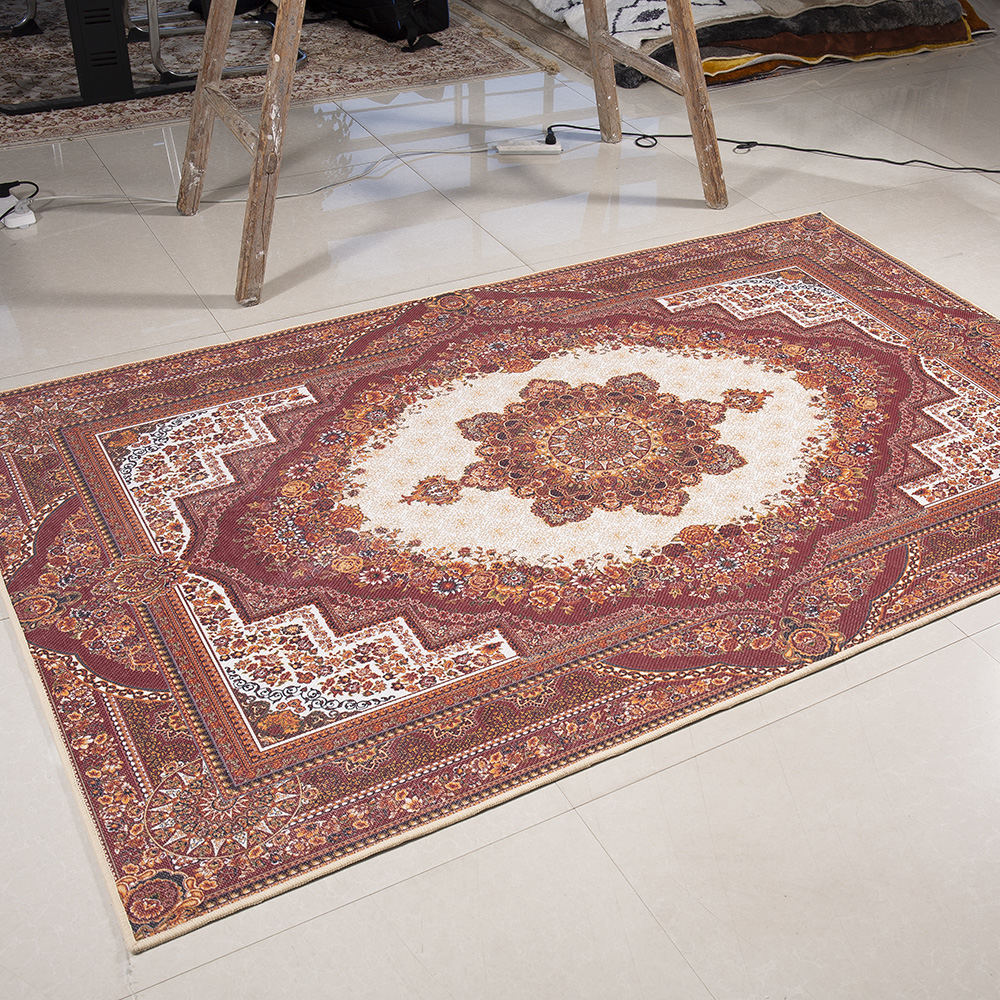 2025.09.23
2025.09.23
 Industry News
Industry News
Carpet is an indispensable part of home decor, offering both comfort and enhancing a space's overall aesthetic. Among the many types of flooring, printed carpet is highly favored for its unique design potential and cost-effectiveness.
Printed carpet, as the name suggests, is made by printing patterns and colors directly onto a carpet base. This technique vastly expands the possibilities for carpet design. From traditional geometric patterns to intricate artistic paintings, almost any design can be realized on a carpet. Unlike traditional tufted or woven carpets, the design of a printed carpet isn't limited by yarn color or weaving style, which allows designers to create more creative and personalized pieces.
The production process of a printed carpet typically involves several key steps:

Printed carpet is popular mainly due to its significant advantages:
Design Flexibility: The biggest advantage of printed carpet is its limitless design possibilities. It can easily achieve complex patterns, color gradients, and high-definition images, which are very difficult to achieve with traditional carpet manufacturing.
Cost-Effectiveness: Compared to traditional carpets that require a large number of different colored yarns and complex weaving processes, the production cost of printed carpet is often lower, especially for small-batch custom orders.
Fast Production: Digital printing technology significantly shortens the production cycle, allowing for quicker responses to market demand and customer orders.
Wide Range of Uses: Due to its excellent design versatility and durability, printed carpet is widely used in commercial spaces like hotels, offices, airports, and exhibition halls, as well as in residential homes.
When choosing a printed carpet, you should consider the following factors:
Material: Different materials affect the carpet's feel, wear resistance, and price. Nylon carpets are durable and suitable for high-traffic areas, while polypropylene carpets have good stain resistance.
Pattern and Color: Choose patterns and colors that match the style of the space to achieve the best decorative effect.
Density and Thickness: A high-density carpet is usually more durable and easier to clean.
For daily maintenance, regular vacuuming is key to keeping the carpet clean. For localized stains, you should immediately treat them with a neutral cleaner and a damp cloth to prevent the stain from setting.
In summary, printed carpet represents an innovation in both technology and design within the carpet manufacturing industry. With its unique advantages, it provides more creative and personalized options for interior design, turning the floor from just a surface for walking into a work of art.